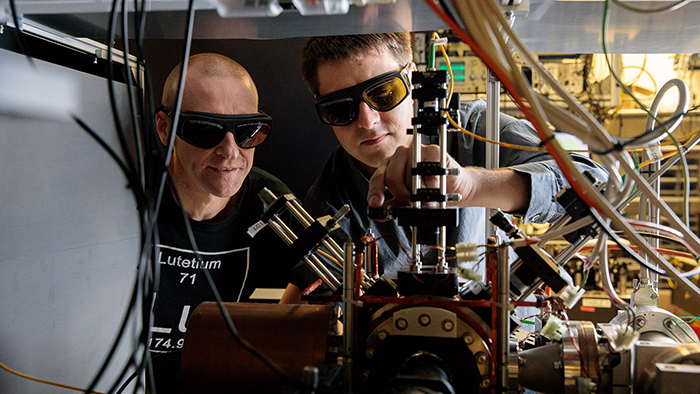A rare earth element that doesn't get much mention could become the key to upgrading atomic clocks to become even more accurate. This could help us explore space and track satellites, and even keep the world's time zones in sync.
Atomic clocks use the oscillations of atoms under laser fire as a measurement of time, in the same way a grandfather clock uses the swing of a pendulum. They can lose less than a second over 50 million years, depending on the elements used - but scientists want even greater accuracy.
That's where lutetium (Lu) comes in. It offers both a higher level of stability and a higher degree of precision than the caesium or rubidium of today's atomic clocks, according to a team of researchers from the Centre for Quantum Technologies (CQT) in Singapore.
 (CQT)
(CQT)
"The ultimate performance of a clock comes down to the properties of the atom – how insensitive the atom is to its environment," says lead researcher Murray Barrett.
"I would call lutetium top in its class."
Since the original atomic clock was designed in 1955, scientists have been experimenting with atoms from different elements, looking for the ones that could operate with the highest level of accuracy.
Caesium, the first element to be used in an atomic clock, oscillates at a microwave frequency of 9,192,631,770 'ticks' per second.
In recent years, other elements like ytterbium and strontium, have been found to work at optical frequencies – some ten thousand times faster.
With more 'ticks' or oscillations in each second, time can be measured with greater and greater precision.
Not only does lutetium operate at these optical frequencies, it also has another ace up its sleeve: changes in temperature and pressure have very little effect on it. That's the conclusion of six months of intensive testing by the CQT team.
Those environmental factors are also what makes the quartz in traditional watches gradually slip out of sync with real time – they're good, but they're not perfect. In the same way, such factors can have tiny impacts on the accuracy of atomic clocks.
"We have definitively shown that Lu is the least sensitive to temperature of all established atomic clocks," says one of the team, Kyle Arnold.
What's more, further studies into the properties of lutetium have shown that it can be built into an atomic clock in the same way that ytterbium can. That means the upgrade shouldn't be too problematic.
Having such robustness and accuracy inside an atomic clock is good for both time-keeping and getting these clocks out of specialist labs and into more real-world situations, the scientists say.
And considering super-fine measurements of time can be vital in studying everything from the forces of gravity to the speed of light, research into atomic clocks that get more and more precise isn't going to stop.
There's still work to do though before we can build a lutetium clock, though. Part of the reason it's been overlooked so far is that a special technique is needed to average out certain kinds of potential inaccuracies.
While the research team has already worked out how to tackle this, they've got a few more hurdles to overcome.
"I don't see it as anyway being an overly technical, difficult thing to do, but I think people are waiting to see how this works out," says Murray.
The research has been published in Nature Communications.
